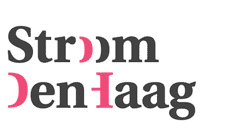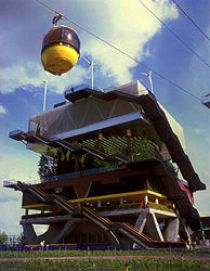MVRDV - Stacked Landscapes
The world exhibition in Hanover in the year 2000 was intended to be a show-case of scenarios for a sustainablebalance between human beings, nature and technology in the 21st century.The Netherlands is a densely populated country combining a high standard of welfare with a great democratic tradition. It could well be the prime example of a country that has always had to (and know how to) mould the environment to suit its will. A country that time and time again won more land from the sea. Perhaps in the near future extra space will be found not just by increasing the country's width but by expanding vertically. This kind of operation would seem to be applicable to many more countries. It raises questions with global significance. Can increasing population density coexist with an increase in the quality of life? What conditions should be satisfied before such increases in density take place? What role will nature, in the widest sense, play in such an increase in density? Isn't the issue here ‘new nature', literally and metaphorically?
This kind of effort can be the Netherlands's specific contribution to the ecological spectrum of the world fair, which seems to be devoted particularly to a nostalgic glimpse of ecology: a simple critique of technology and the consumer society, of asphalt and machinery. What the Dutch entry shows is precisely a mix of technology and nature, emphasising nature's makeability and artificiality: technology and nature need not be mutually exclusive, they can perfectly well reinforce each other.
Nature arranged on many levels provides both an extension to existing nature and an outstanding symbol of its artificiality. It provides multi-level public space as an extension to existing public spaces. And even by arranging existing programmes on many levels it provides yet more extra space, at ground level, for visibility and accessibility, for the unexpected, for ‘nature'.
The fact that this kind of building does not yet exist means that it also gets to function as a laboratory. It not only saves space, literally it also saves energy, time, water, infrastructure. A mini-ecosystem is created. A survival kit. Of course it also tests existing qualities: it attempts to find a solution to a possible lack of light and land. At the same time the density and the diversity of functions builds new connections, new relationships. It can therefore serve as a symbol for the multi-faceted nature of society: it presents the paradoxical notion that as diversity increases so too, seemingly, does cohesion.
Design : MVRDV, Rotterdam: Winy Maas, Jacob van Rijs and Nathalie de Vries
with : Stefan Witteman, Jaap van Dijk, Christoph Schindler, Kristina Adsersen, Rüdiger Kreiselmayer, Philip Oswalt, Joost Grootens, Christelle Gualdi, Eline Strijkers, Martin Young
Film : Hans Werlemann and Claudi Cornaz, Rotterdam
Made possible by : Stimuleringsfonds, Rotterdam
First shown : Biennale di Venezia, June 2000


















